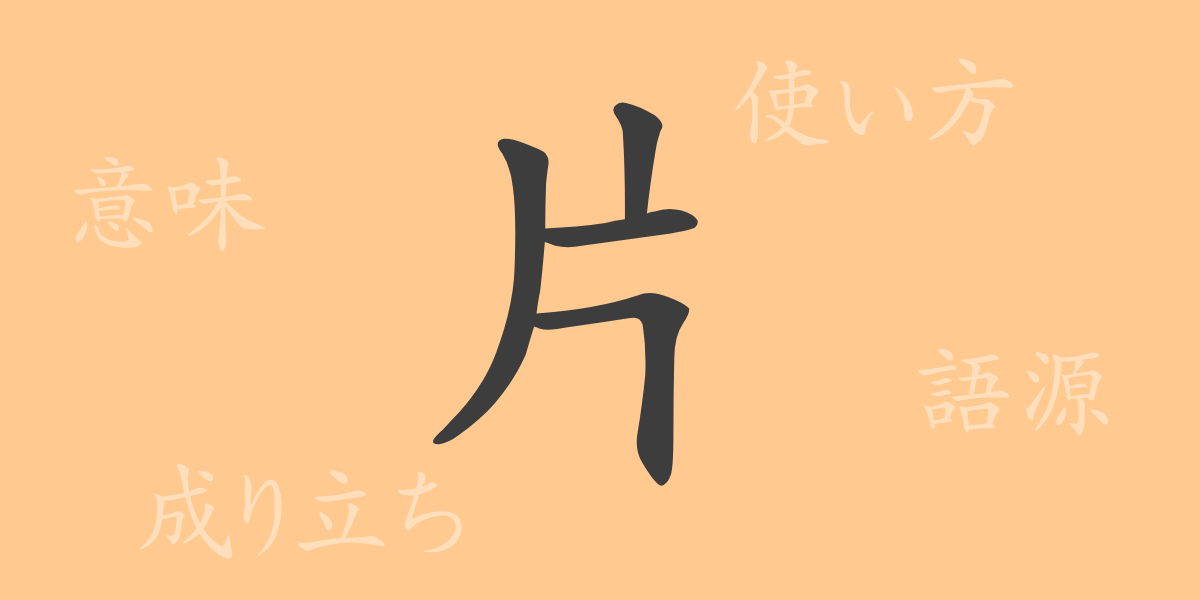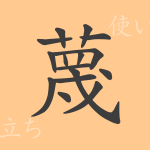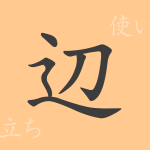In the Japanese language, there are thousands of kanji (characters), each with its unique shape and meaning. The commonly used kanji “片” (kata) is a character frequently encountered in daily life. This article delves into the origins, meanings, uses, readings, and idiomatic expressions of “片” (kata). Let’s explore the world of “片” (kata) together, leading to a deeper understanding of the Japanese language.
The Origins of 片 (kata)
The kanji “片” (kata) originates from ancient Chinese oracle bone script. It originally meant “to lean to one side,” and came to refer to a part of something. Its shape mimics a piece of bamboo cut diagonally, symbolizing meanings like “to split in half” or “one side only.”
The Meaning and Usage of 片 (kata)
“片” (kata) signifies “one side,” “half,” or “fragment.” In Japanese, it’s used to refer to a part of an object or a state of imbalance. As seen in expressions like “片付ける” (katadzukeru, to tidy up) and “片思い” (kataomoi, unrequited love), this kanji is frequently used in everyday conversation.
Readings, Stroke Count, and Radical of 片 (kata)
The kanji “片” (kata) is easy to remember due to its shape and meaning.
- Readings: On’yomi (音読み) is “ヘン” (hen), Kun’yomi (訓読み) is “かた” (kata)
- Stroke count: 4 strokes
- Radical: 片 (かたへん, katahen)
Idiomatic Expressions and Proverbs Using 片 (kata) and Their Meanings
Idiomatic expressions and proverbs containing “片” (kata) vividly reflect the meanings of the kanji. Here are some examples:
- 片付ける (katadzukeru): To tidy up scattered items
- 片思い (kataomoi): To have unrequited love
- 片道 (katamichi): One-way road or one-way journey to a destination
- 片端から (katahashikara): To handle things from one end to the other
- 片腕 (kataude): A person who is very important or reliable to oneself
These expressions utilize the meanings of “片” (kata) as “a part” or “one side.”
Summary of 片 (kata)
The kanji “片” (kata) is a simple yet profound character. It is used in various forms within the Japanese language, enriching the meanings of words. Through this article, we hope to deepen your understanding of the kanji “片” (kata) and rediscover the charm of the Japanese language.

























